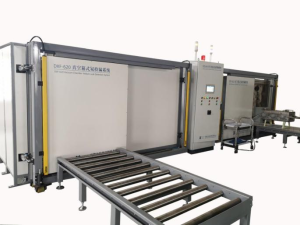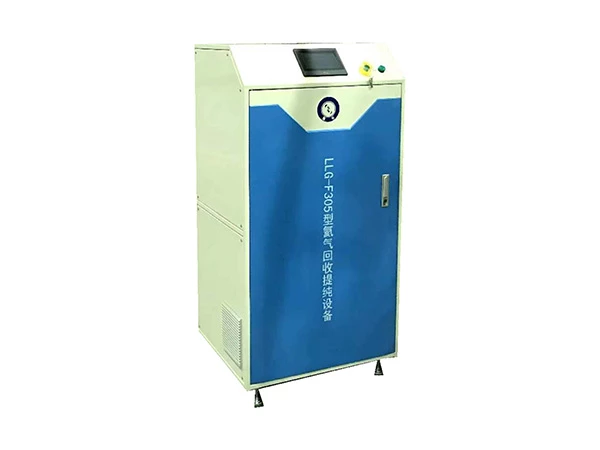Introduction
Helium leak detection is a widely used method for testing the integrity of vacuum chambers, which are commonly employed in various industries, including aerospace, semiconductor manufacturing, and scientific research. These chambers must maintain a high degree of vacuum to ensure the proper functioning of the equipment or experiments conducted within them. Identifying common faults in vacuum chamber helium leak detection systems is crucial to maintain the reliability of these systems and to prevent costly downtime or safety hazards. In this article, we will discuss the most common faults that can occur in helium leak detection systems and how to identify and rectify them.

Inadequate Sensitivity
One of the most common faults in helium leak detection systems is inadequate sensitivity. Sensitivity refers to the ability of the system to detect minute leaks. If the system is not sensitive enough, it may fail to identify small leaks that could lead to a loss of vacuum integrity or compromise the quality of experiments or processes inside the chamber.
Identifying the fault: To diagnose inadequate sensitivity, perform a sensitivity test with a known helium leak source. If the system fails to detect the leak, it may need calibration or maintenance.
Resolution: Calibration and maintenance may involve checking and adjusting the sensitivity settings, replacing worn-out components, or cleaning the test chamber to remove any contaminants that could hinder sensitivity.
Contamination in the Test Chamber
Contaminants in the test chamber can obstruct the accurate detection of helium leaks. Common contaminants include dust, dirt, or residue from previous tests. These can interfere with the helium molecules’ flow, leading to false positives or negatives in leak detection.
Identifying the fault: If the system repeatedly detects false leaks or fails to detect known leaks, contamination may be the culprit. Inspect the test chamber for foreign particles or residue.
Resolution: Regularly clean and maintain the test chamber. Use appropriate cleaning procedures and solvents to remove contaminants, and ensure the chamber is kept clean between tests.
Leaking Test Connections
Leakage can occur at the test connections where the helium is introduced into the vacuum chamber. Faulty or loose connections can lead to helium leakage, causing false positives during leak testing.
Identifying the fault: A telltale sign of leaking test connections is a continuous rise in the background signal or an inability to stabilize the system’s reading.
Resolution: Inspect and tighten all test connections, replace faulty seals or gaskets, and conduct a leak check on the connections to ensure their integrity.
Instrumentation Issues
The instrumentation of a helium leak detection system, including the mass spectrometer, vacuum pumps, and valves, can develop faults over time. Malfunctions or wear and tear can compromise the system’s accuracy.
Identifying the fault: If the system produces erratic readings, inconsistent results, or exhibits unusual behavior, it may be due to instrumentation issues.
Resolution: Regular maintenance, including cleaning, calibration, and component replacement, can help resolve instrumentation problems. Consult the system’s manual for guidance on maintenance and troubleshooting.
Sensor and Filament Problems
The mass spectrometer’s sensor and filament are essential components for helium leak detection. Sensor damage or filament contamination can affect the system’s performance.
Identifying the fault: If the system exhibits erratic signal patterns, low sensitivity, or unusual noise in the readings, sensor and filament problems may be the cause.
Resolution: Replace damaged sensors or filaments, clean contaminated components, and recalibrate the system to ensure accurate and reliable leak detection.
Vacuum Pump Issues
Vacuum pumps play a critical role in maintaining the chamber’s vacuum level. Problems with the pumps, such as worn seals, clogged filters, or reduced pumping speed, can lead to inaccurate leak detection.
Identifying the fault: A drop in vacuum level or prolonged pump-down times can indicate issues with the vacuum pumps.
Resolution: Regularly inspect and maintain vacuum pumps, including changing seals and filters, and addressing any mechanical issues to maintain the required vacuum level.
Conclusion
Helium leak detection systems are indispensable tools for ensuring the integrity of vacuum chambers in various industries. To maintain the reliability and accuracy of these systems, it is essential to identify and rectify common faults promptly. Regular maintenance, cleaning, calibration, and attention to system components are key to preventing downtime, safety hazards, and the potential compromise of experiments and processes within the vacuum chamber. By understanding these common faults and their resolutions, operaton ensure the continued effectiveness of their helium leak detection systems.







